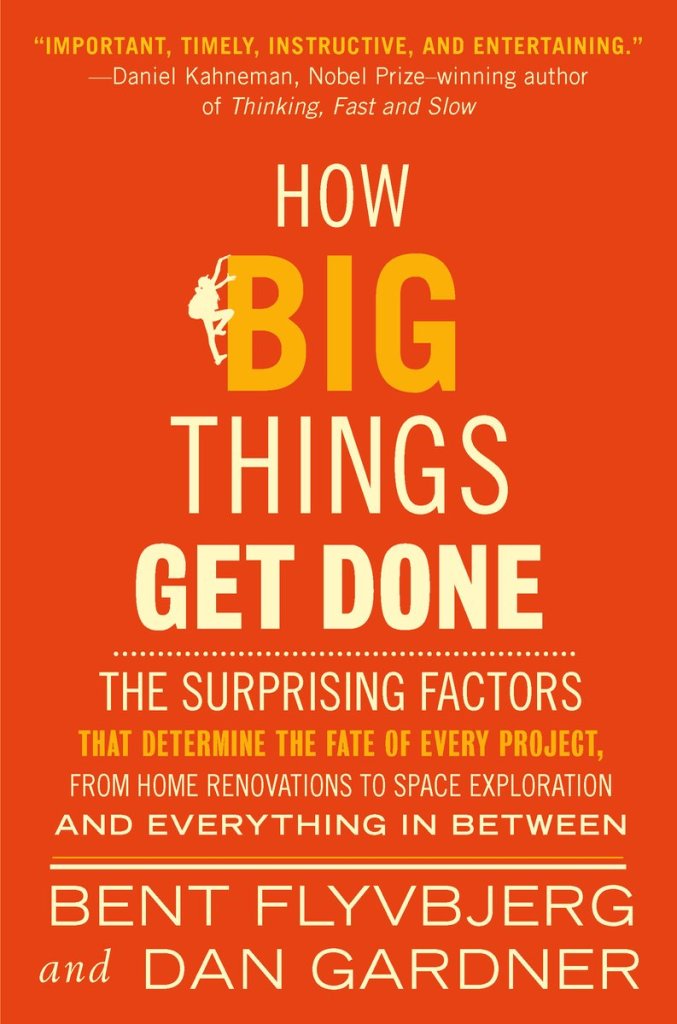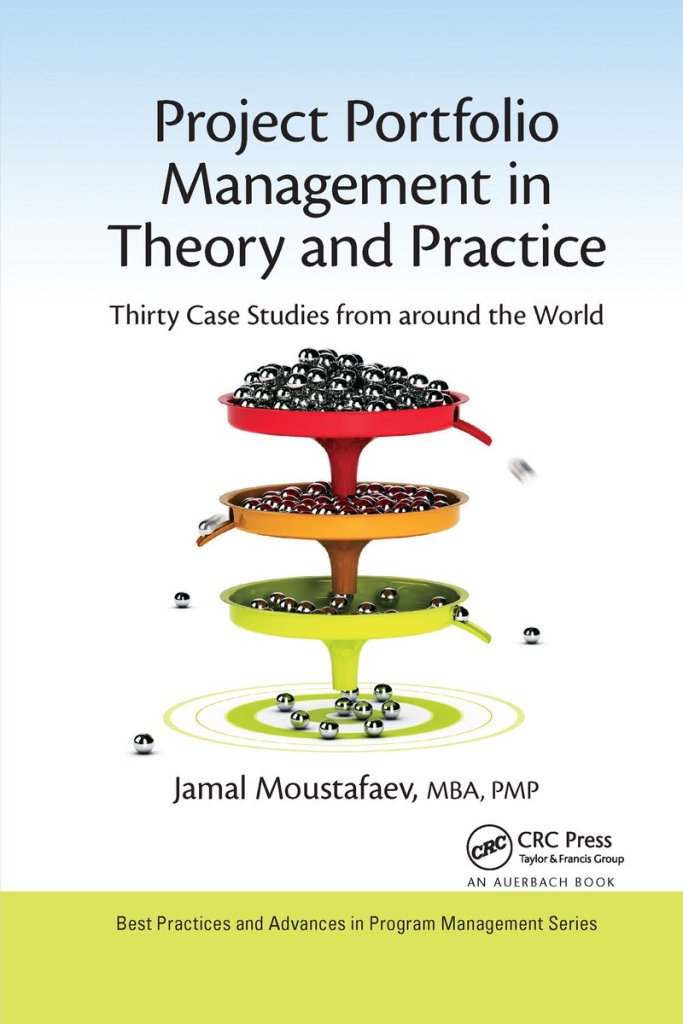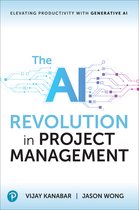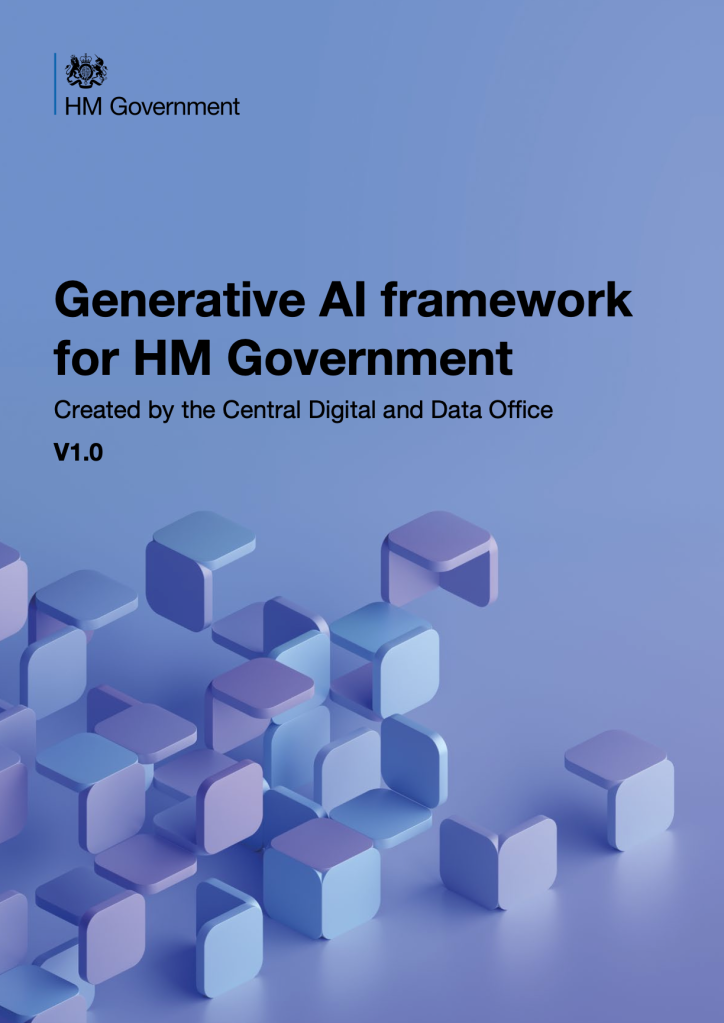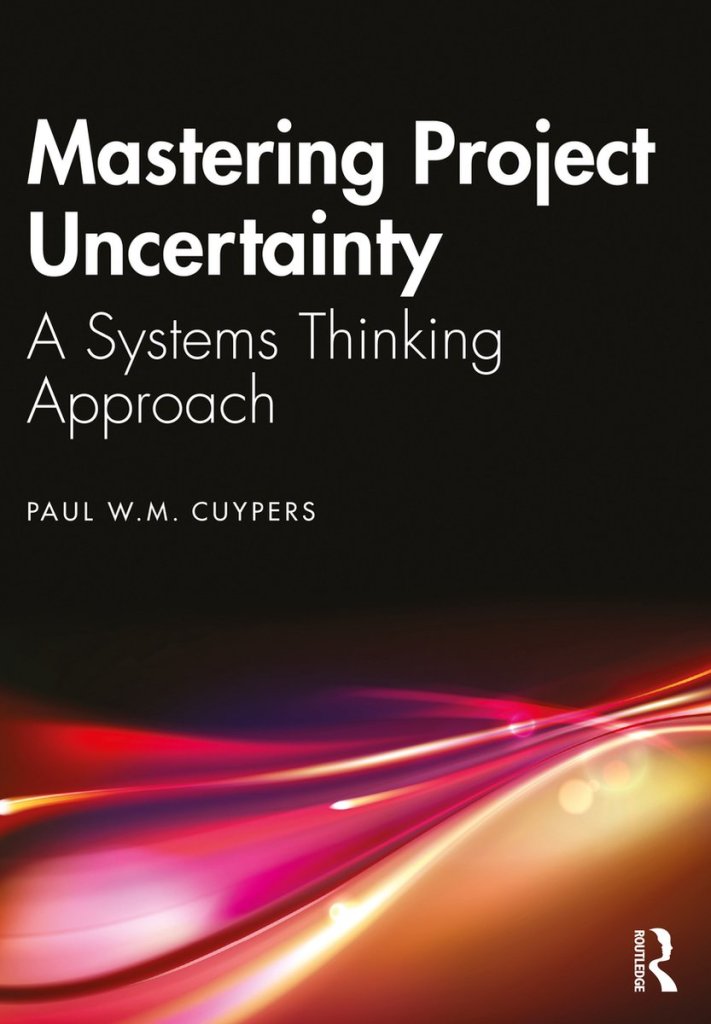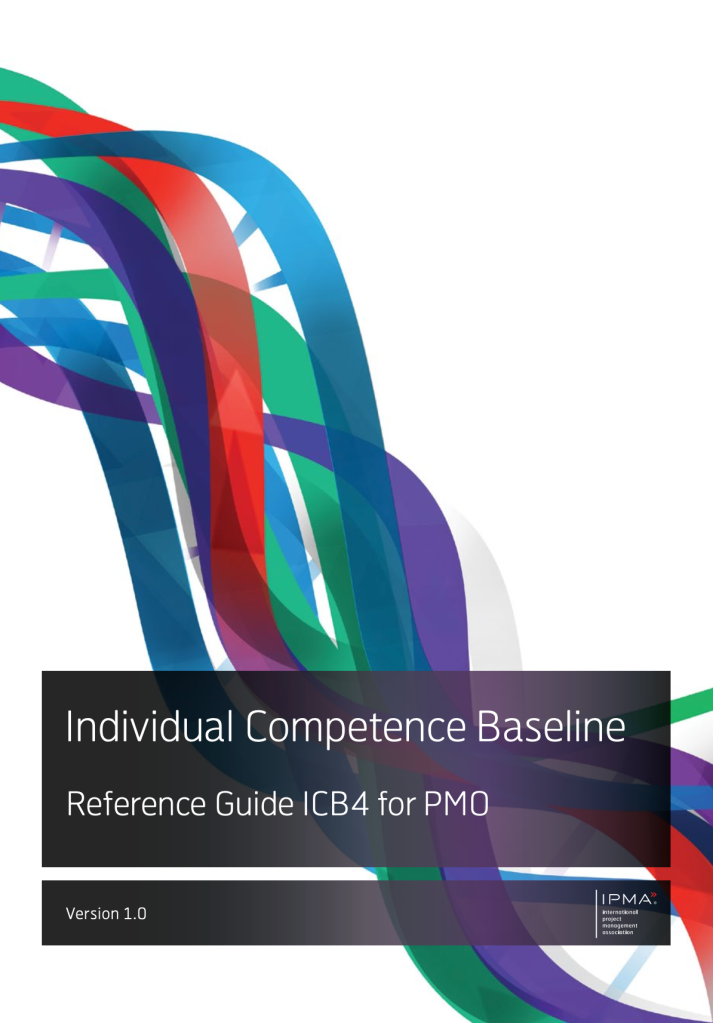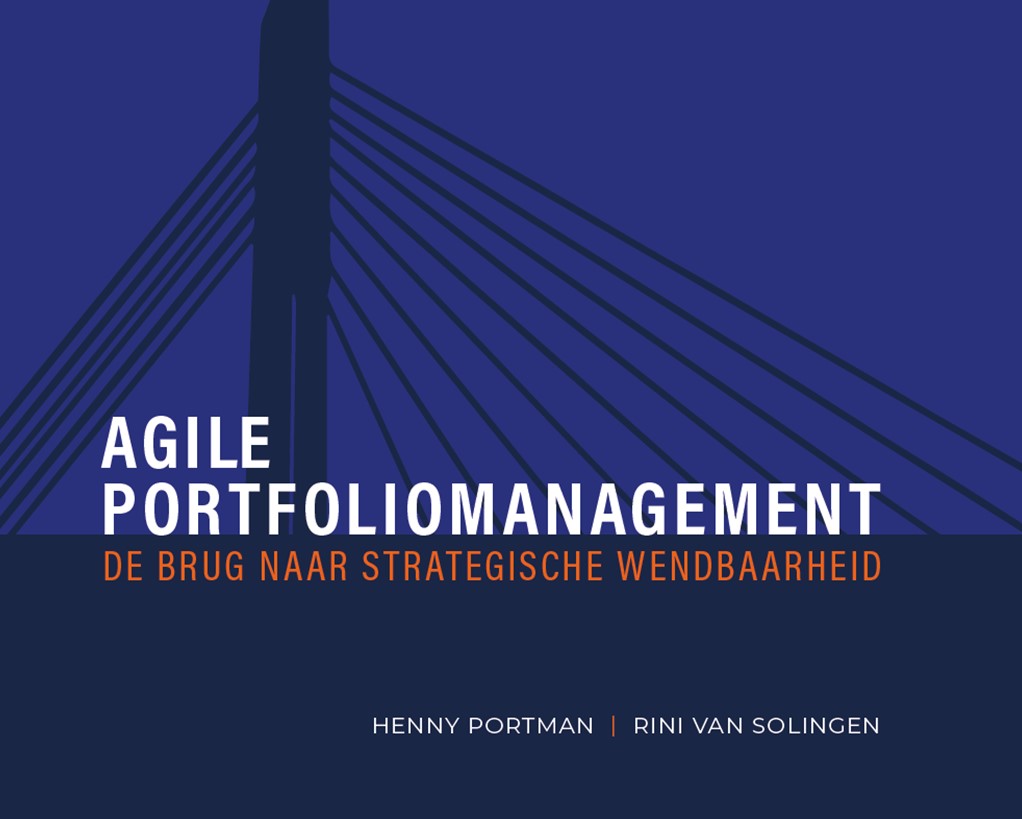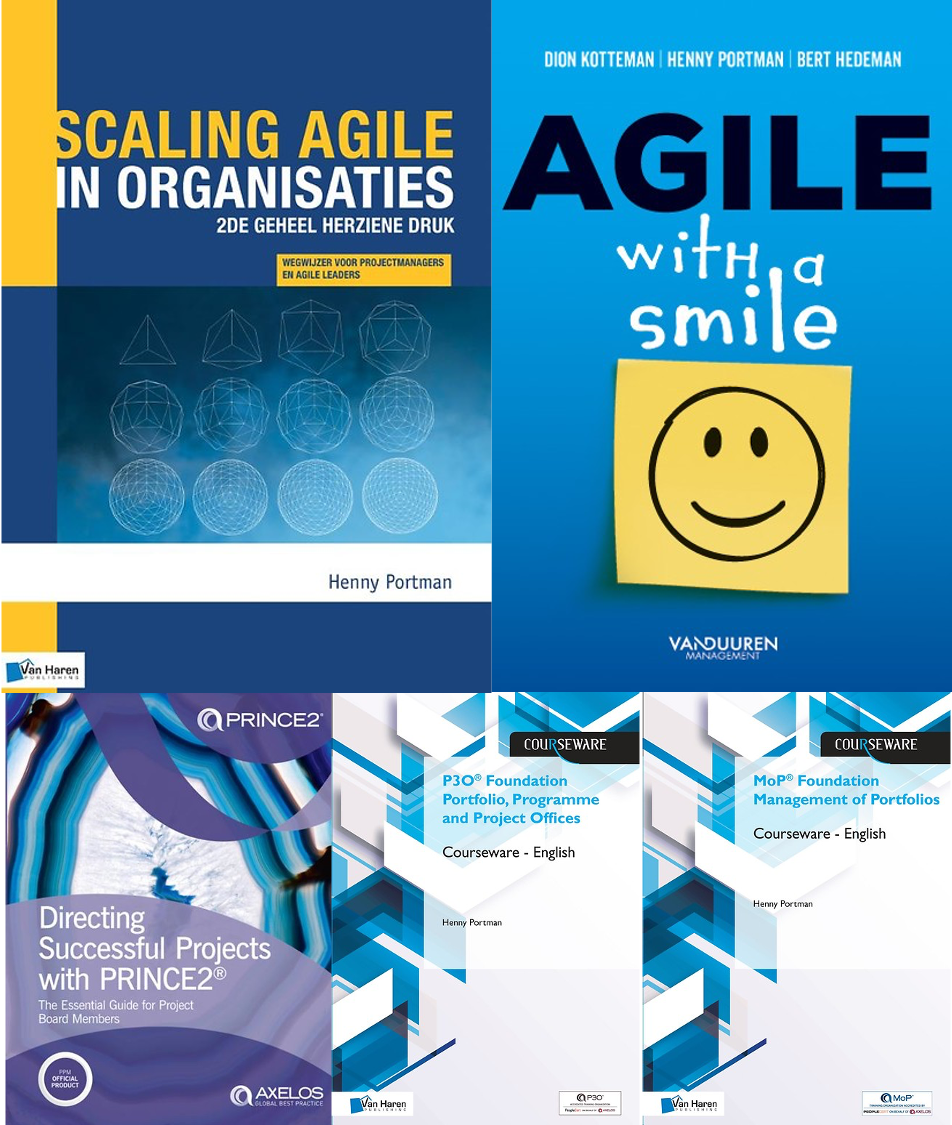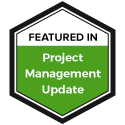These two books can be enjoyed independently, yet they share a significant connection through their central theme of principles and the fact that a PMO is part of the broader PPM environment too. It’s intriguing to explore the extent to which they also align with each other in terms of consistency.
PMO Principles and PMO Services Principles
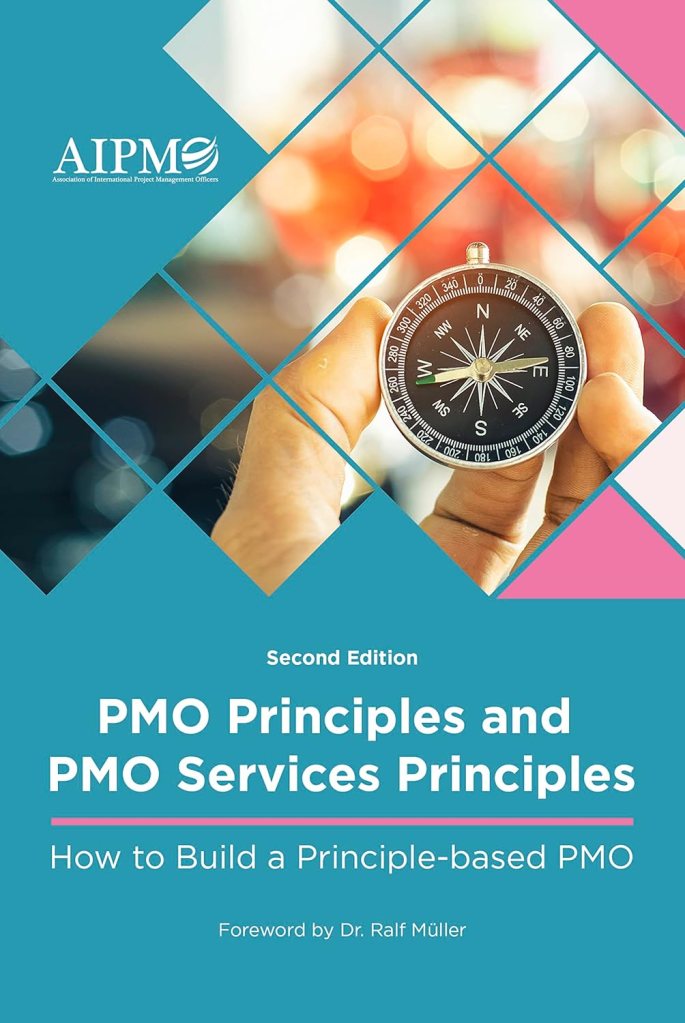
In “PMO Principles and PMO Services Principles – How to Build a Principle-based PMO,” Robert Joslin presents principles as a toolkit for designing, implementing, and operating a PMO that is customized to the unique needs and circumstances of each organization. This book is part of a series, some of which are still in development.
The series will include the following upcoming volumes:
- PMO Principles and PMO Services Principles
- Organizational, Portfolio, Program, and Project Principles
- PMO Services and Capabilities
- The PMO Management standard (under development)
- From Single to Enterprise-wide PMOs (under development)
- Developing and Applying Project, Program, Portfolio and PMO Competence Frameworks (under development)
- PMO Management Body of Knowledge (under development).
The book unfolds across three primary sections. It begins with an in-depth exploration of the fundamental PMO principles, enriched with descriptions, insights, and illustrative examples. The subsequent part focuses on the PMO service principles, specifically designed to align with the PMO services lifecycle framework. Concluding the book is an overview of the PMO service domain principles, demonstrating their application within the service domain.
A principle is a natural law, fundamental truth, or proposition that serves as the foundation for a system of belief or behavior or a chain of reasoning.
I appreciate the concept of applying the Dreyfus model of skill acquisition to the realms of procedure- and principle-based services. The model suggests that the lower levels—novice, advanced beginner, and competent—benefit from procedural services, while the higher levels—competent, proficient, and expert—present an opportunity for principle-based services. This approach could also prove beneficial for maturity models, especially when transitioning from level 3 to 4, shifting from standard to adaptive processes.
The PMO principles
Principles are elucidated with definitions, tips, and examples provided. The seven PMO principles, along with their specific areas of focus, are detailed as follows:
- Sponsorship. Senior management sponsorship and engagement.
- Alignment. Governance alignment.
- Transparency. Consistent, accurate, timely, and transparent information.
- Challenge. Trusted challenge partner to drive value.
- Adjustment. Adaptive services and capabilities.
- Exemplar. Leads by example.
- Improvement. Continuous improvement mindset
When choosing a set of principles, it’s crucial to perform an assurance check to verify that the selected principles deliver the anticipated impact. The book introduces a distinctive method for selecting the most appropriate principles for each PMO. For each principle, you assess whether its impact on the PMO objectives, the challenges faced by the PMO, and the systemic organizational issues is high, medium, or low. Principles that demonstrate the highest impact are then selected.
The significance of PMO principles and the extent to which they are integrated and maintained should be directly proportional to the PMO’s impact factor, acknowledging that other elements also contribute to the PMO’s overall impact.
PMO services principles
Part II elaborates on the PMO services principles, categorizing them according to each phase of the PMO services lifecycle. These phases include service strategy, service design, service pilot and implementation, service operation, and service transformation or retirement.
For each phase, you are presented with a collection of principles accompanied by their descriptions. To identify the most crucial principles, the same selection method used for the PMO principles is applied.
PMO service domain principles
The final section outlines all 22 PMO service domain principles, which are organized into four clusters: conceptualization, planning, execution, and safeguarding the future. For each service domain, you receive tips to master it.
In the appendix, you will find an overview of AIPMO’s PMO Strategic Lifecycle Framework, along with a list of acronyms, a glossary, and lists of the PMO, PMO service lifecycle, and PMO service domain principles.
Organizational, Portfolio, Program, and Project Principles
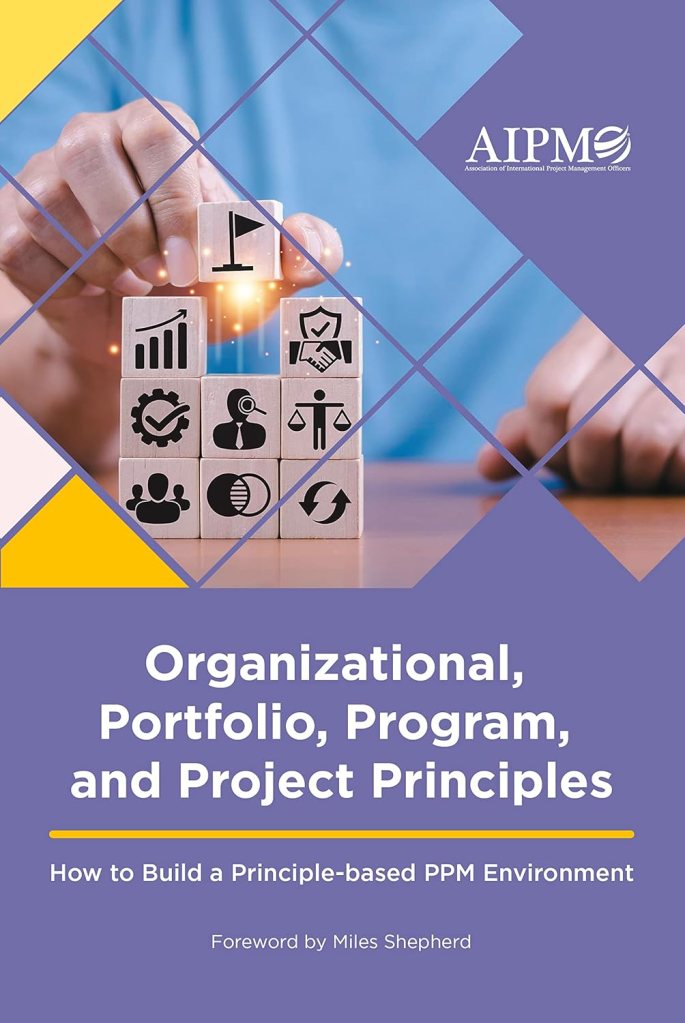
The book “Organizational, Portfolio, Program, and Project Principles – How to Build a Principle-based PPM Environment,” authored by Robert Joslin and Rälf Müller, offers a comprehensive overview of principles, illustrating their pivotal role within an organization. It delves into how principles govern the organization and lay the groundwork for portfolio, program, and project management, providing a holistic perspective on the subject.
The book begins by introducing principles, ethics, and values, exploring the causal relationships between principles, values, and behavior. It distinguishes between management and governance principles and discusses how principles can be applied throughout the organization.
Governance principles
The Organization for Economic Co-operation and Development (OECD) has outlined five key principles for effective governance: transparency, accountability, responsibility, fairness, and sustainability.
Shared principles across a portfolio, program, and project
Shared principles, which are applied across portfolio, program, and project management, come with an explanation, definitions, tips, and a case study for each. The principles discussed and their respective focuses include:
- Sponsorship. The effectiveness of every initiative is linked to the degree of senior management interest and engagement.
- Governance alignment. The portfolio, program, and project governance structures are aligned within and to organizational governance.
- Strategic alignment. Ensuring the right initiatives are selected, and checked against the then and current strategy throughout their respective lifecycles.
- Leadership. Demonstrate a balance of leadership and management to embed and uphold the PPM principles to maximize situational impact.
- Insight. Reflective learning and insight.
- Improvement. Continuous improvement mindset.
- PMO alignment. Aligned portfolio, program, and project PMOs.
- Sustainability. Taking decisions based on the three pillars of sustainability, that is, economic, environmental, and social.
Portfolio management principles
A range of principles applicable to portfolio management is thoroughly explained, complete with tips and examples on their application. These principles are designed to tackle the primary challenges encountered in portfolio management. Additional principles can be incorporated to meet the specific needs of a portfolio. The principles discussed and their respective focuses include:
- Value orientation. Value creation within an organization is to exploit opportunities to create value.
- Selection. Select the right projects for the right reasons.
- Adjustment. Continuous adjustments to optimize cost/value, resources, work type, and schedule.
- Kill early, kill fast. A clinical non-biased approach of a component deselection.
Program management principles
A variety of principles relevant to program management are comprehensively detailed, accompanied by practical tips and illustrative examples for their implementation. These principles are crafted to address the core challenges faced in program management. To cater to the unique requirements of a specific program, additional principles can be integrated. The principles discussed, along with their specific areas of focus, include:
- Benefits orientation. Leading change to create sustainable benefits, as a direct and indirect result of the program.
- Balance expectation/impact. Balancing the management of stakeholders and management forstakeholders to adjust expectations and impact.
- Risk optimization. Develop and execute risk strategies to maximize the probability of delivering the expected benefits.
- Capability. Design, build, and deliver a sustainable program capability.
Project management principles
A selection of principles pertinent to project management is elaborately presented, along with actionable tips and vivid examples for their application. These principles are designed to confront the fundamental challenges inherent in project management. To accommodate the distinct demands of a particular project, extra principles may be added. The principles discussed, each with its dedicated focus, include:
- Feasibility. The continuous validation of the feasibility of project objectives and their potential adjustment.
- Guidance. Guidance through management and leadership.
- Be prepared. Planning and risk management as one.
- The vital few (success factors). Determine what makes the difference in achieving the project goals.
- Tailoring. Tailor the methodology and approach to increase the likelihood of project success.
- Customer/client orientation. Providing value to your customer/client while balancing the interests of your organization and your customer/client.
International principle-based methodologies
In a dedicated chapter, we receive a comprehensive overview of the principles from various international principle-based methodologies, including PMBOK (PMI), IPMA ICB, PRINCE2 (Axelos), Agile principles, ISO principles, Half Double principles, and AIPMO PMO Principles.
Selecting principles
Considering the array of principles, it’s essential to determine which are the most crucial. Begin with the five OECD principles as a foundation, outline the entity’s objectives, major problems or challenges, and systemic issues. Compile a list of potential principles and evaluate them based on their effectiveness in supporting the objectives and mitigating the challenges and systemic issues faced by the entity. Finally, conduct tests on the selected principles to ensure their efficacy.
Decision-making
The final chapter provides insights on how to apply principles to minimize the risk of suboptimal decision-making. It addresses the following risks: bias, incomplete and/or ambiguous information, inexperience or lack of competence, self-interest, and ill-fitting or poorly designed governance structures.
Conclusion
I can highly recommend these books. The two books offer a thorough overview of principle-based PMO and PPM environments. The binding, though acceptable, has flaws affecting durability. This is likely a result of using Amazon. Adequate typography is marred by occasional inconsistencies hindering readability (e.g. the table titles are difficult to read). Effective use of color enhances visual appeal. The text is generally clear. Language usage is engaging, but occasional dull moments occur. The content is highly relevant, delivering actionable guidance that enhances practical utility and substantially enriches professional practice with innovative solutions. It also aids decision-making with clear, applicable advice and provides robust solutions for relevant problems. It presents a new perspective e.g. how to build a PMO based on principles, the usage of shared principles and the method to select the right principles, with relevant examples. Case studies vary in relevance and integration, with some offering deep insight while others lack relevance. The highly qualified authors engage with the community, demonstrating significant impact. While the book provides insight, it lacks depth and thorough coverage in certain areas, limiting its effectiveness, especially in personal growth advice. But as stated this book is part of a family of PMO related books.
Upon reviewing the chapter on international principle-based methodologies, it seems to me that agile methodologies are somewhat underrated. With over 100 different agile frameworks and approaches available, the initial explanation of the Agile Manifesto and its twelve underlying principles appears somewhat cursory. This is referred to as Agile 1, noting that there is a revised version, Agile 2. However, to my knowledge, Agile 2 is not widely recognized internationally. It’s curious why the chapter does not consider the frameworks from the Agile Business Consortium, which include AgilePfM (with 5 principles), AgilePgM (with 5 principles), and AgilePM (with 5 principles), or other well-established frameworks like SAFe or LeSS with their own principles.
On the flip side, it’s acknowledged that agile methodologies, much like prescriptive methods, are not a one-size-fits-all solution. A more hybrid approach, favoring a blend of frameworks and techniques tailored to the project’s specific needs, is often more advantageous. This adaptability underscores the benefits of adopting a principles-based approach, allowing for flexibility and customization in project management practices.
Consistency
Both books employ a consistent methodology. Each principle is succinctly defined, typically in one or two words, along with a focused explanation. This same method underlies the selection of the appropriate principles.

